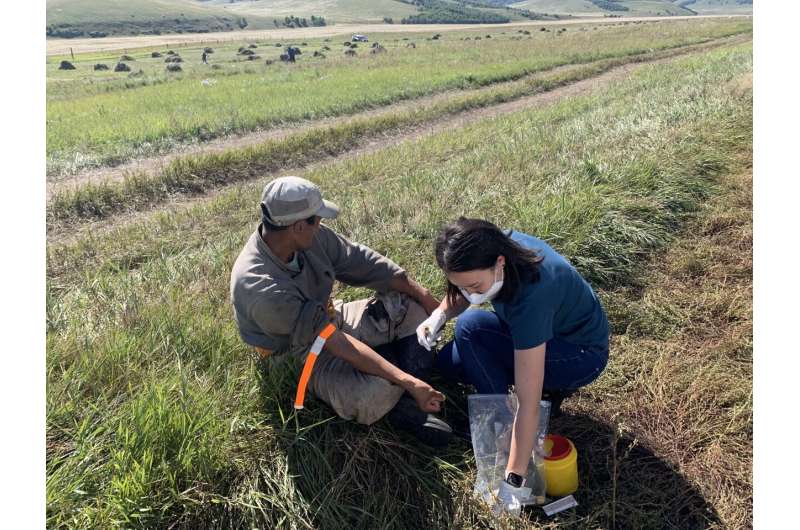Global COVID-19 infection rates may be higher than previously reported

Serosurveillance provides estimates of antibody levels against infectious diseases and is considered the gold standard for measuring population immunity due to past infection or vaccination. A study publishing November 10 in the open access journal PLOS Medicine, jointly authored by the World Health Organization's (WHO) Unity Studies and SeroTracker and colleagues, suggests that based on seroprevalence, global COVID-19 infection rates are likely to be higher than previously reported.
The global scale of COVID-19 infections is not well understood. Routine surveillance data underestimates infection and cannot infer population immunity due to asymptomatic infections and uneven access to diagnostics. In order to ascertain the true rates of infection and indicators of immunity in the population against SARS-CoV-2 over time, researchers conducted a systematic review and meta-analysis of seroprevalence studies published from January 1, 2020 to May 20, 2022.
From their search parameters, the authors identified 965 distinct seroprevalence studies sampling 5,346,069 participants between January 2020 and April 2022, with 43% of these studies being from low-middle income countries. They analyzed seroprevalence by country and month, estimating regional and global seroprevalence over time, and estimated seropositivity rates from infection versus infection or vaccination.
The researchers found that global seroprevalence has risen from 7.7% in June 2020 to 59.2% in September 2021, suggesting two-thirds of the global population may be SARS-CoV-2 seropositive from either vaccination or infection. Estimates of COVID-19 infections based on seroprevalence data far exceed reported cases, suggesting a bigger global impact of COVID-19 than previously known. The study did have limits, such as underrepresentation of some countries in the data, and overrepresentation of others.
According to the authors, "This study on global seroprevalence of SARS-CoV-2 antibodies found that while seroprevalence has increased over time, a third of the global population tested negative for antibodies against the virus as of September 2021 estimates. It was also found that compared to seroprevalence estimates, routine testing for COVID-19 has largely underestimated the number of global infections."
Bergeri, Whelan, Ware, Subissi and colleagues add, "As we enter the third year of the COVID-19 pandemic, implementation of a global system or network for targeted, multi-pathogen, high-quality and standardized collaborative serosurveillance is a crucial next step to monitor the COVID-19 pandemic and contribute to preparedness for other emerging respiratory pathogens."
More information: Global SARS-CoV-2 seroprevalence from January 2020 to April 2022: A systematic review and meta-analysis of standardized population-based studies, PLoS Medicine (2022). DOI: 10.1371/journal.pmed.1004107





















